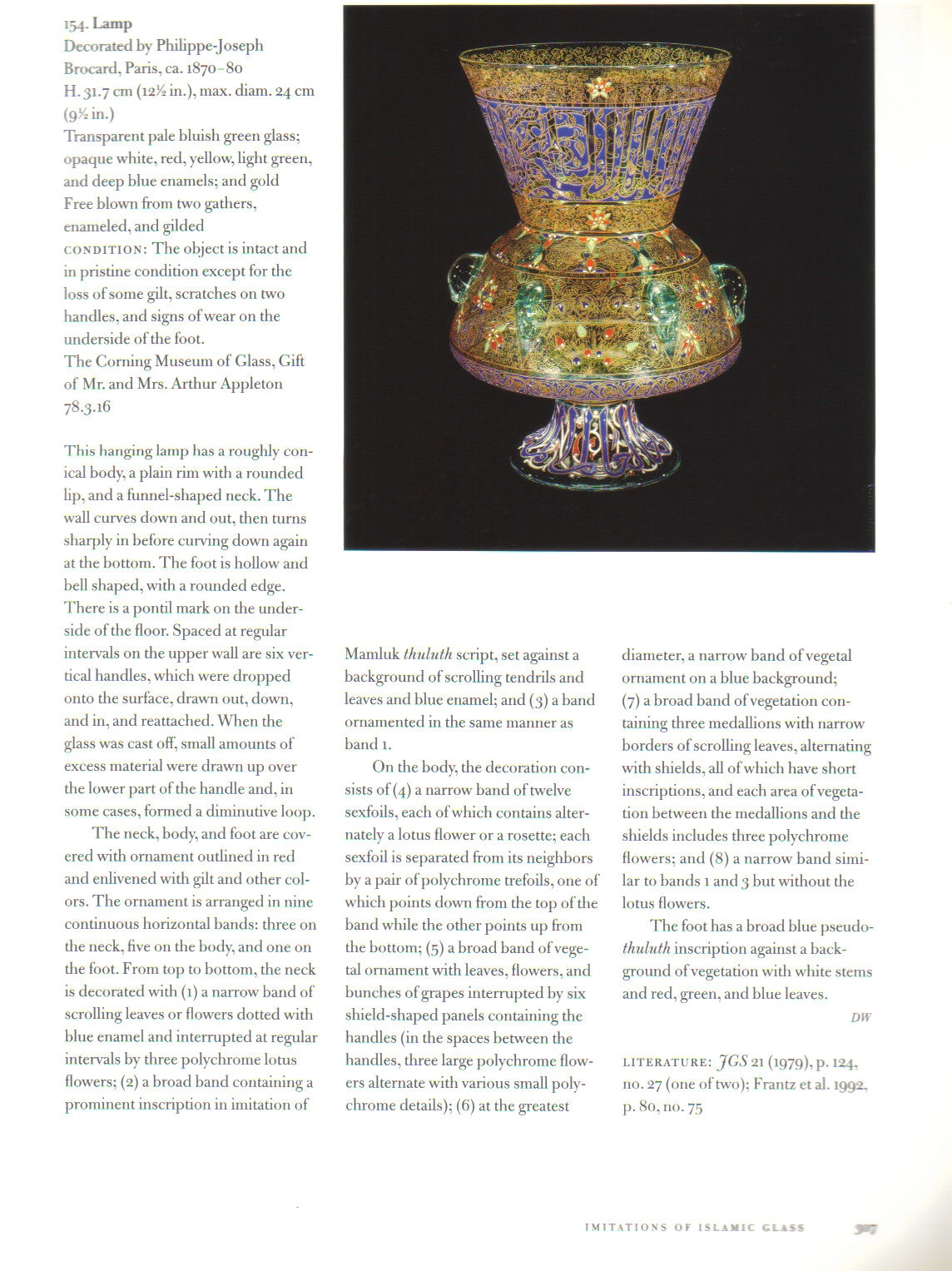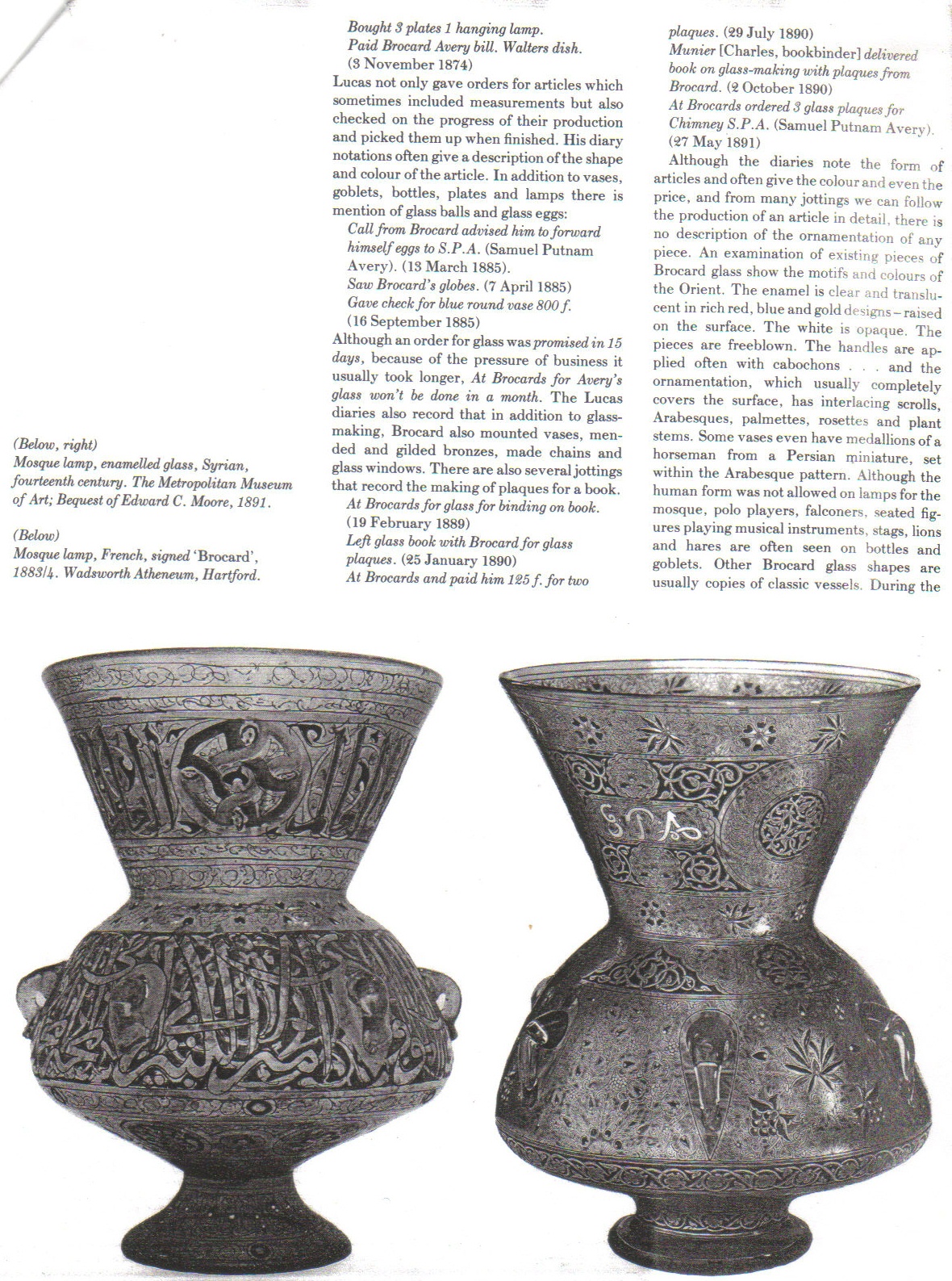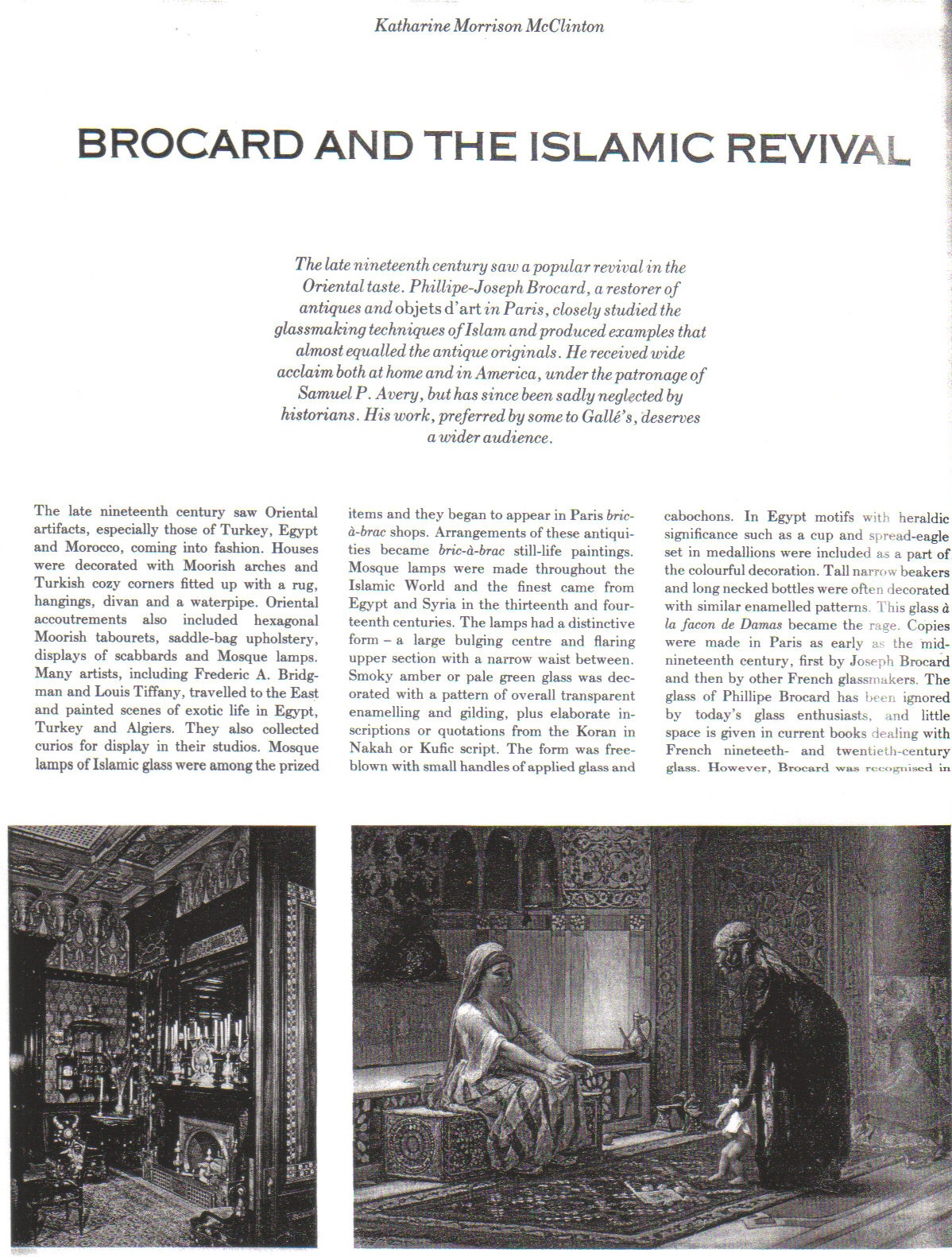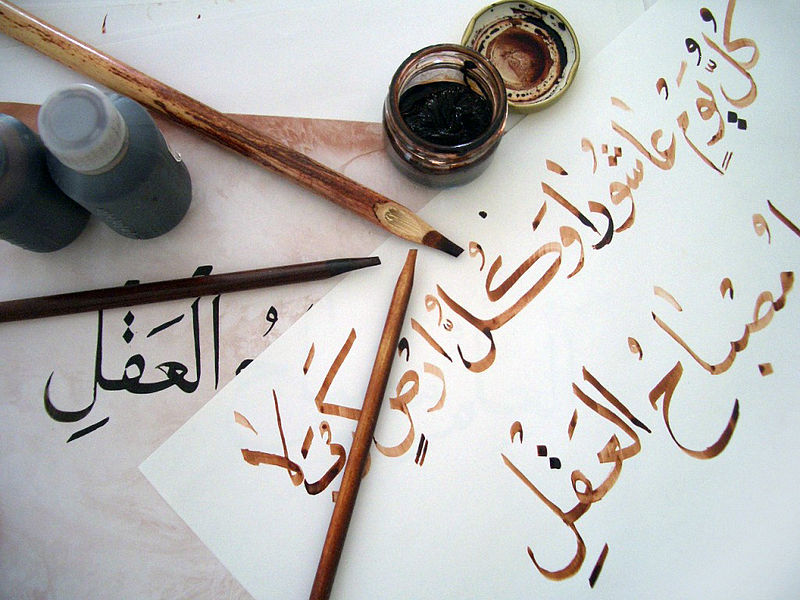The iridescent ground finely enamelled in royal blue, spring green, crimson red and ivory and decorated with Arabic motifs, featuring phoenixes and interlacing scrolls, Arabesques, palmettes, rosettes and plant stems, the three cartouches finely enamelled with naskhī script with the inscriptions: 'Allah, Ar-Rahman, Ar-Rahim' ('In the name of God, The Compassionate, The Merciful') 'Al-Fattah, Al-Razzaq' ('The Opener [of all doors]') 'Al-Alim, Al-Qabidh Al-'Alim' ('The Sustainer, The All-Knowing, The Almighty'), With red enamelled signature Brocard à Paris
14 ¾ in (37.7 cm) high, 10 in (25.4 cm) wide
cf. Stefano Carboni and David Whitehouse, Glass of the Sultans, The Metropolitan Museum of Art, New York, 2001, p. 307 for a similar model from the Corning Museum of Glass
Katharine Morrison McClinton, 'Brocard and the Islamic Revival', The Connoisseur, December 1980, p. 27, for an almost identical vase in the collection of the Wadsworth Atheneum Museum of Art, Hartford, commissioned by the American collector Samuel Putnam Avery
An independent craftsman who began his career as a restorer of antiques, Brocard was fascinated by Islamic glass, especially mosque lamps which he collected. He studied their glassmaking techniques and mastered in discovering the formula for enamels, and the timing of the vitrification, so that his glass almost equalled the antique Islamic pieces. Brocard exhibited his first Islamic-type glass at the Exposition Universelle in 1867 in Paris and he was immediately hailed as a great master of enamelling techniques. In 1873 he exhibited at the Vienna International Exhibition, where he was awarded a Progress Medal, and in 1874 exhibited again in Paris. At the 1878 International Exhibition in Paris, Brocard was awarded a First Prize.
A number of Brocard's own creations can be found in the British Museum, the Victoria and Albert Museum, and the Corning Museum of Glass. An almost identical piece is in the collection of the Wadsworth Atheneum Museum of Art, Hartford, which was commissioned by the American collector, Samuel Putnam Avery.

















